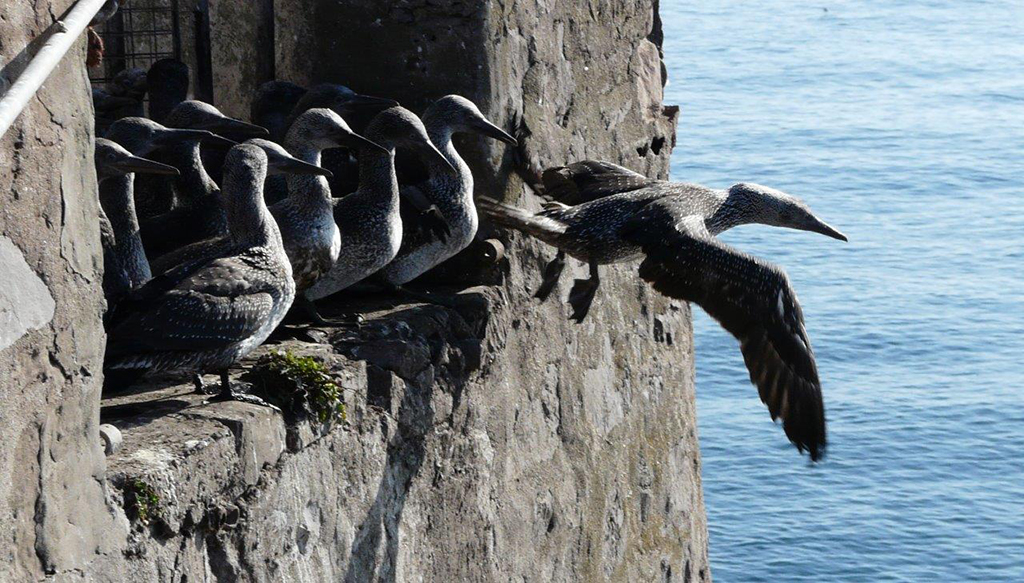Residents and visitors along the Firth of Forth coastline are being asked to help young northern gannets as they fledge from the world’s largest gannet colony on the Bass Rock.
The call comes as the Scottish Seabird Centre and SSPCA have received a number of reports about gugas washed ashore following recent stormy weather.
Every year the Bass Rock is home to a sense-busting colony of 150,000 gannets and their young are starting to jump from the Rock as they fledge.
At this stage in their life, the gugas are unable to fly and usually loaf around on the water for a while. If, however, there are strong onshore winds some may be washed ashore and may require assistance.
The gugas don’t have the white plumage of the adult birds but they are large, upright in stance and have a dark, speckled plumage.
Maggie Sheddan, the Scottish Seabird Centre’s Bass Rock landing guide said: ‘Not all gugas that are washed ashore will require help so it’s important to know what to look out for. If the birds are feisty and make a move to attack you, or to run into the sea, they probably just need to be left to rest. Keep your distance.
‘If the guga is not moving much, and you can get closer to it, then it’s probably in need of more help.

‘We are therefore appealing for people to be extra vigilant over the next few weeks and to alert the Scottish SPCA on 03000 999 999, or to make contact with the Scottish Seabird Centre on 01620 890202, if they spot a guga in need of assistance.’
Maggie added: ‘Some of the gannets on the Bass Rock are fitted with a numbered leg ring, tag or other data loggers as part of scientific research into the gannets movements. We would like to be able to retrieve these devices as they contain valuable data that helps inform conservation activity, so please contact us if you see a grounded guga with these devices.
‘If calling for assistance, it’s important that you provide accurate information on your location. This might be a street name and house number, or where you are in relation to a visible landmark on the shore or one of the islands in the Firth of Forth. Details on accessibility by footpath or road are all helpful details for the SSPCA or Scottish Seabird Centre.’
For more information about the Scottish Seabird Centre’s conservation, education and community-based charitable activities look up www.seabird.org
To donate and support the work of the Scottish Seabird Centre visit: https://www.justgiving.com/scottishseabird-centre
TAGS

